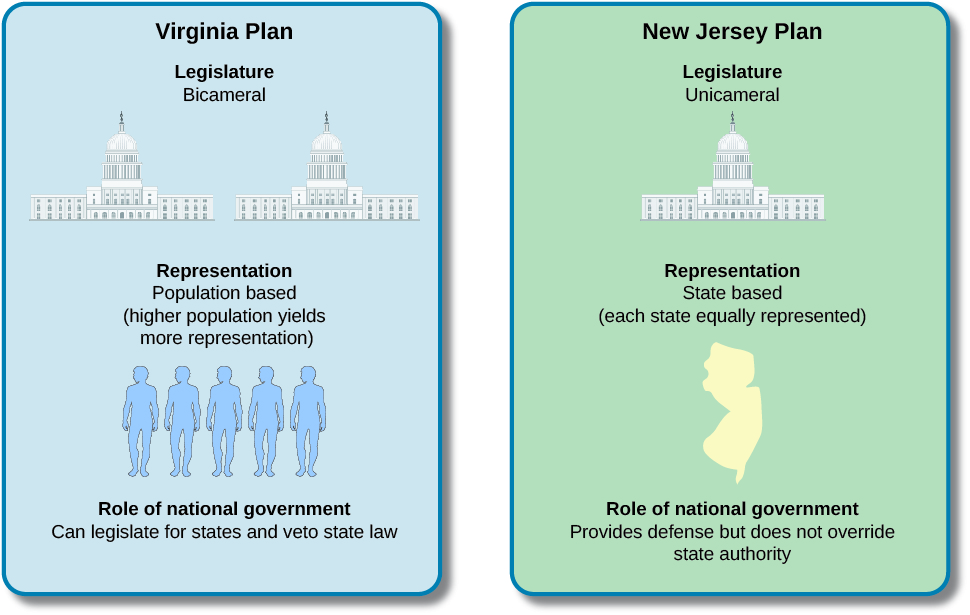| << Chapter < Page | Chapter >> Page > |
Delegates from small states objected to this Virginia Plan . Another proposal, the New Jersey Plan , called for a unicameral legislature with one house, in which each state would have one vote. Thus, smaller states would have the same power in the national legislature as larger states. However, the larger states argued that because they had more residents, they should be allotted more legislators to represent their interests ( [link] ).

Another fundamental division separated the states. Following the Revolution, some of the northern states had either abolished slavery or instituted plans by which slaves would gradually be emancipated. Pennsylvania, for example, had passed the Act for the Gradual Abolition of Slavery in 1780. All people born in the state to enslaved mothers after the law’s passage would become indentured servants to be set free at age twenty-eight. In 1783, Massachusetts had freed all enslaved people within the state. Many Americans believed slavery was opposed to the ideals stated in the Declaration of Independence. Others felt it was inconsistent with the teachings of Christianity. Some feared for the safety of the country’s white population if the number of slaves and white Americans’ reliance on them increased. Although some southerners shared similar sentiments, none of the southern states had abolished slavery and none wanted the Constitution to interfere with the institution. In addition to supporting the agriculture of the South, slaves could be taxed as property and counted as population for purposes of a state’s representation in the government.
Perhaps the greatest division among the states split those who favored a strong national government and those who favored limiting its powers and allowing states to govern themselves in most matters. Supporters of a strong central government argued that it was necessary for the survival and efficient functioning of the new nation. Without the authority to maintain and command an army and navy, the nation could not defend itself at a time when European powers still maintained formidable empires in North America. Without the power to tax and regulate trade, the government would not have enough money to maintain the nation’s defense, protect American farmers and manufacturers from foreign competition, create the infrastructure necessary for interstate commerce and communications, maintain foreign embassies, or pay federal judges and other government officials. Furthermore, other countries would be reluctant to loan money to the United States if the federal government lacked the ability to impose taxes in order to repay its debts. Besides giving more power to populous states, the Virginia Plan also favored a strong national government that would legislate for the states in many areas and would have the power to veto laws passed by state legislatures.

Notification Switch
Would you like to follow the 'American government' conversation and receive update notifications?